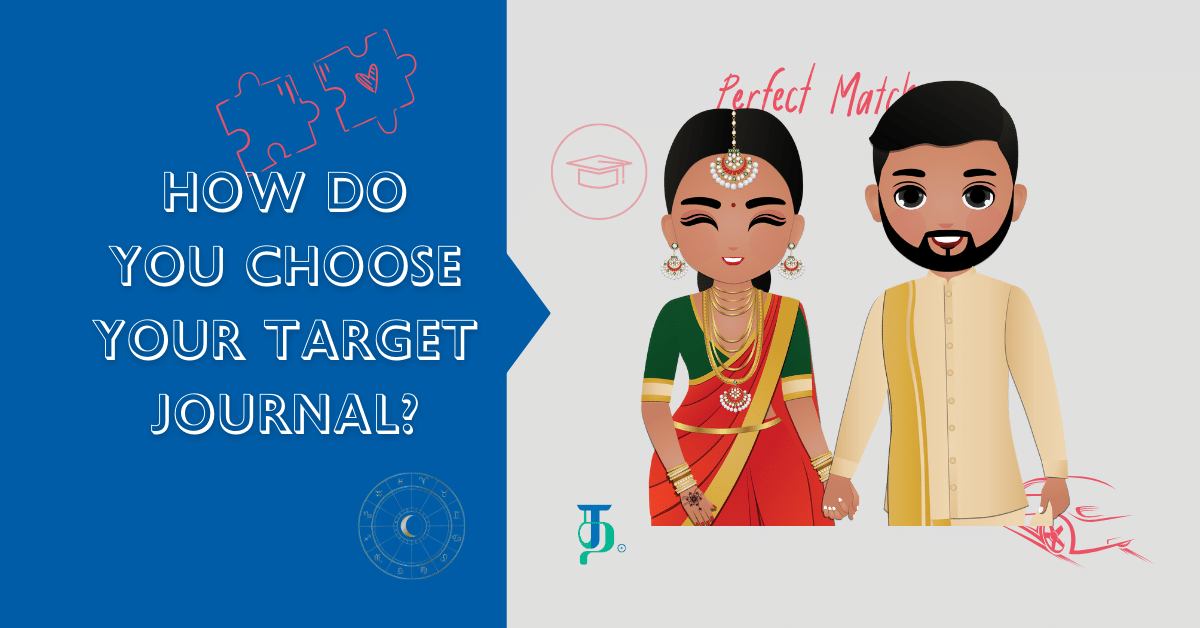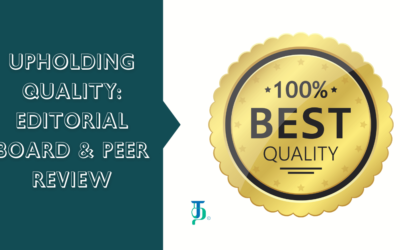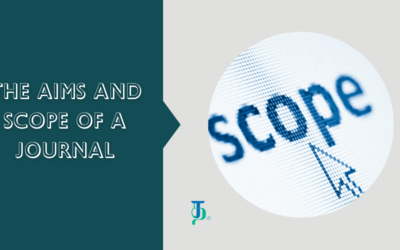Based on the information we shared through our previous posts, by now, you know how important it is to decide the type of journal – open access or subscription, most importantly staying away from predatory journals – you want to publish your article in.
As a next step, you need to choose the target journal – the journal that aligns with and fits the scope of your research.
You might be wondering whether it is too early to talk about choosing the journal. You may not even have written your article yet. For many reasons, choosing the target journal before you write your article is an efficient strategy. We will discuss then in our next article.
Coming back to journal selection, remember that your goal is to find a journal that not only publishes your work but also contributes to the growth and recognition of your research career – just like finding a life partner who supports your personal and professional aspirations.
Talking of a life partner, think of the elaborate preparations that happen before a marriage – during match-making. Does it happen overnight? No, right? It happens over a few months. Think of the so many considerations we usually have: education, employment, salary, social status of the families, etc. And oh, I totally forgot about the crucial component: horoscope! Even after all these considerations, we may end up with more than one “good” match and finally you go by your instinct.
Choosing the right journal for your paper is similarly involving. Let’s assume, for the sake of argument, that you weren’t keen on your selection process, decided to publish on a whim, and chose a journal randomly. Let’s say, luckily, your manuscript was somehow accepted by the journal. Then, one of these three things could happen.
One, the chosen journal publishes a lot of work similar to yours. Publishing in a journal aligned with your research ensures that your work reaches the right audience, increasing the likelihood of engagement and relevance within your field. It is a perfect match!
But unfortunately, Murphy’s law tells us that anything goes wrong will go wrong. So, your choosing the perfect match by a random act is close to an impossible event, with a probability close to zero!
Two, the chosen journal is a high-impact journal that publishes articles that are ahead of the quality of your work. The journal will take a few months for first decision. If your paper is accepted, all is well and good: in fact, you are in luck, because your work will receive better visibility.
However, if your paper gets rejected, which is most often the possibility – thanks, again, to Murphy’s law – you may need to repeat the submission process with another journal and wait for another few months for the verdict, further delaying the dissemination of your research. If it gets rejected again, then the wait gets longer and longer. You might never know when your research will get accepted for publishing. The disappointment will diminish your interest in publishing your paper, even creating self-doubt about your work.
Third, the chosen journal’s reputation is not that good, but your article is way ahead in terms of quality and the information it provides. Opting for a less esteemed journal might lead your colleagues to assume that your research lacks rigour or significance, irrespective of its actual merits. It may curtail the visibility of your research, leading to fewer citations, which are pivotal for academic impact and recognition. The journal might be ecstatic to publish your work, but your work will not receive the recognition it deserves.
Now, you see the point I am trying to make.
Just as match-matching happens through multiple criteria, matching your research with the right journal should also happen through multiple criteria. In either case, you might be compromised about a few considerations, but will be particular about a few other.
So how do you go about?
- To start with, understand the different criteria needed to identify the target journal.
- Create a long list of journals that matches most, if not all, of your criteria.
- Compare them and narrow your search down to a few.
- Scan the articles recently published by these journals, and try to get a sense of which of these publishes works that are similar to your work.
- Use your instinct to select the target journal. (Yes, I did say “instinct”! When all your criterial are exhausted, your instinct works wonders. For this to work, you need to train it well.)
So, you will now ask what those criteria are. In the reminder of this series, we will discuss them in detail.




